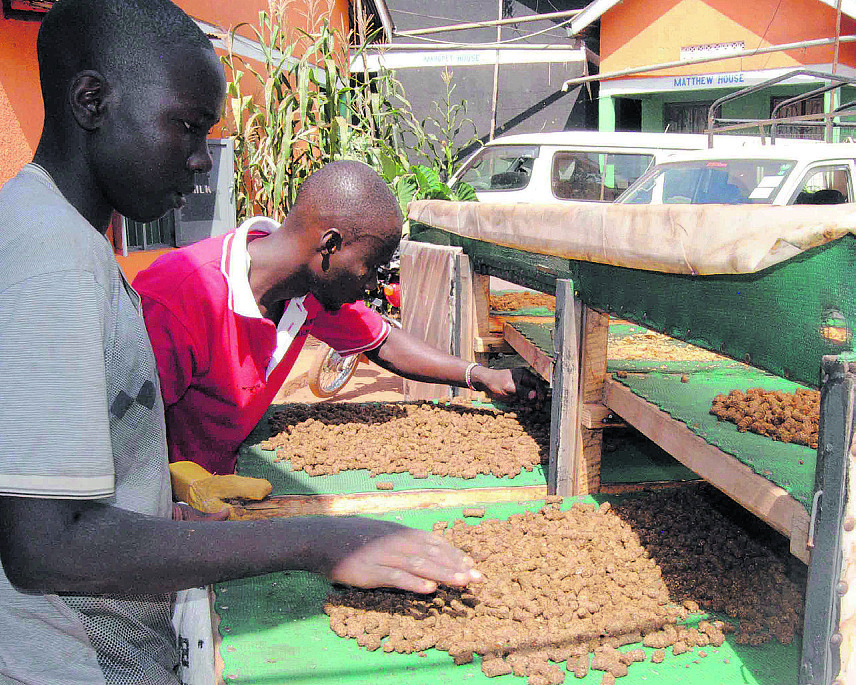Feeding cattle on grass is the commonest system. However, changing trends now dictate that farmers must seek new feeds if they are to get good milk yields from their cows.
Dr Jolly Kabirizi, from the National Livestock Resources Research Institute (NaLIRRI), said Uganda Vision 2040 identified the dairy cattle enterprise as strategic for increased investment levels and accelerated production.
She pointed out that dairy products, notably milk, provide a significant nutritional supplement to infants and pregnant mothers.
They also increase the resilience of smallholder households in the face of food crises, provide a regular source of income. However, the sector is faced with challenges.

“The biggest constraint to smallholder dairy farms is inadequate year-round feed supply. The basal feed resources for dairy cattle are low quality pastures and crop residues,” Kabirizi said.
She recommended that appropriate supplementation with commercial concentrates is an effective way of enhancing the utilisation of low-quality feeds such as crop residues, thus sustaining dairy cattle performance, especially during periods of pasture scarcity.
The form (such as powder, pellets or blocks) in which a concentrate is offered to the animals affects the dry matter intake and milk yields.
Pellets are made from rations based on locally available feed resources such as leguminous forages, crop residues and agro-industrial byproducts to enhance productivity of Uganda’s dairy sector.
Why feed dairy cattle on pelletes
- Pellets provide a well-formulated supplementary ration to meet the energy and protein requirements of dairy cows to support high production levels and improve reproductive performance.
- Pelleted dairy supplements minimise feed wastage through reducing spillage.
- Minimise feed selectivity by the cow compared to when individual feeds are provided.
- They are palatable, hence are readily accepted by dairy cattle.
- Enhance intake and digestibility of the basal feed.
- Prevent separation of constituents in animal feeds due to varying size and density.
- NARO dairy pellets are affordable and of high nutritional quality.
How pellets are made
To process 100kg of pellets, the combination should have 53kg of maize bran, 22kg of cottonseed cake, 14kg of calliandra leaf hay, 10kg of molasses and 1kg of mineral pre-mixes.
The raw materials have to be free of any contamination.
The raw materials required include grasses such as calliandra, lablab, maize bran, cottonseed cake and molasses, which bind the mixture, maize stovers and minerals.
Also add sodium benzonite to improve the shelf life of the pellets.
Most of these ingredients can be got from farms or from animal feeds shops. Calliandra or lablab is harvested from farms.
The raw materials are cut into pieces and grinded.
After the grinding, the ingredients are blended.
Then molasses is added at a rate of 10% of the total mixture to get a fairly moist, cohesive mash.
The mixture is then put in the pellet mill feeder and then into the roller and die extruder, which turns it into pellets. By this time, the pellets have got a moisture content of about 17%.
However, the ideal moisture content should be 12%.
The pellets can be dried under the sun or using a solar drier to remove the moisture content to 12%.
The pellets are then packed in 5kg and 10kg packs, ready for the market.
How to make dairy cattle pellet
Raw materials required Calliandra, lab lab, maize bran, cotton seed, molasses (kaloddo), that acts as a binder, maize stovers and minerals.
Sodium benzonite in order to improve shelf life.
Raw materials are cut to pieces of at least 1cm using a motorised feed mill chopper
Ingredients are put in motorised grinder or manual grinder. After the grinding, they are poured into a motorised feed pellet blender and stirred to get a uniform blend
The mixture is then put in the pellet mill feeder and then the roller and die extruder, which turns it into pellets.
Recommendations
Dr Jolly Kabirizi recommends the following;
- The dairy pellets are specially formulated to supplement dairy cattle on a basal diet of pastures
- Provide (quality and quantity) feed resources for cow health and milk yield to increase profitability
- Provide cows with plenty of clean drinking water and mineral supplements
- Vaccinate the cows
- Keep records
- Keep cattle breeds with a high genetic potential for milk yield
- Use improved dairy cattle technologies to manage your farm as a business
- Provide good/clean and comfortable environment to your cows





